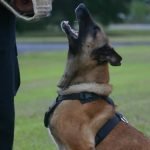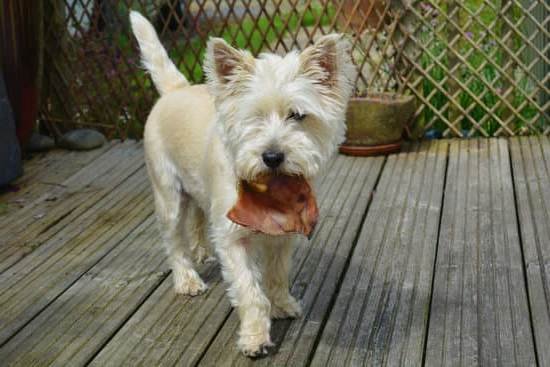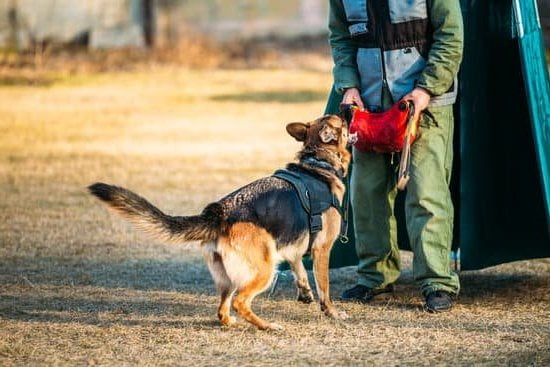House training is a crucial aspect of owning a dog, regardless of whether they live indoors or outdoors. However, when it comes to outside dogs, proper house training becomes even more essential. In this article, we will explore the significance of house training for outside dogs and highlight the benefits of having a well-behaved and house-trained canine companion.
House training an outside dog not only helps to maintain cleanliness in your yard or outdoor living space but also promotes responsible pet ownership. A properly house-trained dog is less likely to engage in destructive behaviors such as digging up flower beds or chewing on furniture. Moreover, a well-behaved outside dog can contribute positively to the overall harmony of your neighborhood.
Understanding the needs and habits of your dog is crucial when embarking on the house training journey. Dogs have natural instincts and behaviors that need to be recognized and understood to effectively train them. By recognizing your dog’s individual patterns and habits, you can tailor their training according to their specific needs.
In the following sections, we will dive deeper into these topics and provide practical tips on creating a suitable living space outdoors for your dog, establishing consistent routines, implementing positive reinforcement techniques, choosing appropriate house training methods, troubleshooting common challenges, and maintaining long-term success. Let’s get started on this journey towards a well-mannered and happy outside dog.
Understanding Your Dog’s Needs and Habits
Dogs have certain natural instincts and behaviors that play a crucial role in house training. By understanding these needs and habits, you can create an environment that is conducive to successful house training for your outside dog.
Recognizing Individual Patterns and Habits
Just like humans, dogs have their own unique personalities, patterns, and habits. It is important to recognize and understand these individual traits in order to effectively train your dog. Pay attention to when your dog typically needs to go potty, how long they can hold their bladder or bowels, and any specific signs they may exhibit when they need to eliminate.
By recognizing their patterns and habits, you can establish a consistent routine that aligns with your dog’s needs. This will help them understand where, when, and how they are supposed to eliminate outdoors. Consistency is key in house training an outside dog.
Territorial Marking and House Training
Territory marking is another crucial aspect of a dog’s behavior that can impact house training. Dogs have a natural instinct to mark their territory by urinating on objects or areas. While this behavior is considerably reduced when a dog lives outdoors, it is essential to establish clear boundaries for them.
When setting up the outdoor living area for your outside dog, ensure that there are clear boundaries in place where elimination is encouraged. Designate one specific spot where you want your dog to eliminate each time. This will help minimize accidents around the house as well as reinforce the appropriate behavior of eliminating outdoors.
Understanding your dog’s territorial instincts will also assist in addressing any challenges related to marking behavior during the house training process. With proper training techniques and consistency, you can curb this behavior effectively.
By understanding your dog’s natural instincts, individual patterns, and behaviors such as territorial marking, you can create an environment that supports successful house training for your outside dog. Recognizing these needs and habits will not only ensure a well-behaved and happy dog but also foster a stronger bond between you and your furry companion.
Creating a Suitable Living Space Outdoors
Creating a suitable living space outdoors is an essential aspect of house training an outside dog. Dogs need a comfortable and secure environment where they can thrive and feel safe. When setting up the outdoor living area for your dog, there are several factors to consider.
Firstly, providing shelter is crucial for your dog’s well-being. Whether it’s a sturdy doghouse or a covered area with proper insulation, shelter protects your furry friend from extreme weather conditions such as rain, snow, or excessive heat. It also gives them a sense of security and can help reduce anxiety.
Equally important is providing bedding for your dog’s comfort. Bedding should be soft, supportive, and easy to clean. Options like dog beds with removable covers or elevated beds that provide warmth and ventilation are excellent choices.
Additionally, access to fresh water is vital for your outdoor dog. Make sure you have a water source available at all times and regularly check the bowl to ensure it is clean and filled. Dehydration can lead to serious health issues in dogs, so make sure they always have access to clean water.
A designated elimination spot within the outdoor living area can greatly aid in house training an outside dog. Providing clear boundaries and consistency by designating one specific area for them to relieve themselves helps reinforce good habits. Use positive reinforcement when they use the designated spot correctly by praising and rewarding them with treats or verbal praise.
| Aspect | Tips |
|---|---|
| Shelter | Provide a sturdy doghouse or covered area with insulation |
| Bedding | Choose soft, supportive bedding that is easy to clean |
| Water | Ensure a constant supply of clean water |
| Designated elimination spot | Establish clear boundaries and reinforce good habits using positive reinforcement |
Establishing and Maintaining a Consistent Routine
Establishing and maintaining a consistent routine is crucial when house training an outside dog. Dogs are creatures of habit, and having a predictable schedule helps them understand what is expected of them and reduces any confusion or anxiety they may experience. A consistent routine also allows for easier training and quicker progress in house training.
Significance of Consistency
Consistency is key when it comes to house training an outside dog. Dogs thrive on routine, and knowing what to expect gives them a sense of stability and confidence. By establishing a consistent daily routine, you can set clear expectations for your dog’s behavior and make the house training process more effective.
Establishing Feeding Times
One important aspect of maintaining a consistent routine is establishing regular feeding times for your outside dog. Feed your dog at the same time every day to regulate their digestive system and create predictable potty habits. This will help you anticipate when your dog will need to eliminate and allow you to take them to the designated elimination spot in your outdoor area.
Potty Breaks and Exercise
In addition to feeding times, incorporating regular potty breaks into your dog’s schedule is essential for successful house training. Take your dog outside on leash several times throughout the day, especially after meals or naps, as these are typical times when dogs need to relieve themselves.
Besides potty breaks, providing regular exercise is also crucial in helping your outside dog adhere to their routine. Engaging in physical activities not only expends energy but also stimulates the natural patterns of elimination. Aim for daily exercise sessions that suit the breed and age of your dog, ensuring they remain active and mentally stimulated.
Introducing a New Routine
When introducing a new routine to an outside dog, it’s important to do so gradually. Sudden changes can lead to confusion or resistance, making it difficult for your dog to understand the new expectations. Start by incorporating small changes into their daily routine, gradually increasing the structure over time. This approach allows your dog to adjust at a comfortable pace and increases the chance of successful house training.
By establishing and maintaining a consistent routine, you can effectively house train your outside dog and achieve long-term success. Remember, patience and consistency are key during this process. Soon enough, your well-behaved and house-trained dog will be a testament to the efforts invested in establishing a routine that works for both of you.
Positive Reinforcement and Basic Training Techniques
When it comes to house training an outside dog, positive reinforcement and basic training techniques play a crucial role in shaping their behavior. Positive reinforcement involves rewarding desired behaviors to encourage their repetition, making it an effective method for teaching dogs how to behave appropriately. By utilizing treats, praise, and rewards, you can establish a strong connection between good behavior and positive outcomes.
To effectively use positive reinforcement during house training, start by identifying the behaviors you want to encourage. This may include eliminating in the designated spot, following commands, or exhibiting calm behavior around visitors. Once you have identified these behaviors, follow these step-by-step instructions:
- Timing is everything: Reward the desired behavior immediately after your dog performs it. This helps them understand which action is being rewarded.
- Use high-value treats: Choose treats that are particularly enticing to your dog and only provide them as a reward during training sessions. This will increase their motivation to perform the desired behavior.
- Be consistent in your cues: Use consistent verbal cues or hand signals to associate with specific behaviors. For example, use the command “go potty” when you want your dog to eliminate in the designated area.
- Shower them with praise: Alongside treats, praise your dog enthusiastically when they exhibit the desired behavior. Encouraging words such as “good job” or “well done” will reinforce their understanding of what they did right.
- Gradually reduce treat rewards: As your dog becomes more proficient at performing the desired behavior consistently, slowly reduce the frequency of treat rewards while increasing verbal praise and other forms of non-food rewards.
Consistency and patience are key when using positive reinforcement techniques for house training an outside dog. Remember that each dog is different, so be flexible in finding what motivates and works best for your furry friend.
| Positive Reinforcement Method | Description |
|---|---|
| Treat-based training | Using high-value treats to reward desired behaviors immediately after they are performed. |
| Praise and petting | Giving verbal praise, physical affection, or belly rubs as a form of reinforcement when your dog exhibits the desired behavior. |
| Clicker training | Pairing a clicking sound with treats or rewards to mark the moment your dog performs the desired behavior. |
By consistently using positive reinforcement techniques, you can effectively teach your outside dog what is expected of them during the house training process. This not only accelerates their learning but also strengthens the bond between you and your furry friend. Remember to be patient, understanding, and celebrate every small success along the way.
Implementing Effective House Training Methods
When it comes to house training an outside dog, implementing effective methods is crucial for success. There are various house training techniques suitable for outdoor dogs, such as crate training or bell training. Each method follows a step-by-step process that gradually transitions from outdoor to indoor training.
One popular method is crate training. This involves using a crate or kennel as your dog’s designated sleeping and resting area.
Dogs have a natural instinct to keep their living space clean, so by confining them to a small area, they will be less likely to eliminate indoors. It’s essential to choose the right size crate for your dog – not too big that they can relieve themselves at one end and sleep at the other, but also not too small that they feel cramped and uncomfortable.
To begin crate training, gradually introduce your dog to the crate by placing treats and toys inside as positive reinforcement. Encourage your dog to enter voluntarily and praise them when they do so. Once your dog is comfortable entering the crate, you can start closing the door for short periods while remaining nearby so they don’t feel abandoned. Gradually increase the duration over time, always rewarding good behavior with treats or verbal praise.
Another effective house training method is bell training. This technique teaches your dog to signal when they need to go outside by pawing or touching a set of bells hung on a door handle. Start by introducing your dog to the bells and associating them with going outside – for example, gently guiding their paw or nose towards the bells before opening the door for them.
Consistency and patience are key when implementing any house training method. It’s important to establish clear expectations and stick to a routine that includes regular potty breaks, feeding times, and exercise. Remember to reward your dog every time they eliminate in their designated outdoor spot or indicate that they need to go outside using the bell.
By implementing these effective house training methods, you can set your outside dog up for success and establish good habits that will benefit both you and your furry friend. Remember to be patient and consistent throughout the training process, as it may take time for your dog to fully grasp the concept. With dedication and positive reinforcement, you’ll soon celebrate the achievement of a house-trained outdoor dog.
Troubleshooting Common House Training Challenges
House training an outside dog can sometimes present challenges along the way. It’s important to be aware of these challenges and know how to address them effectively. By understanding and troubleshooting common house training challenges, you can ensure a smoother and more successful training process for your outdoor dog.
- Accidents: Even with the best efforts, accidents may happen during the house training process. Whether it’s due to confusion, lack of understanding, or being left alone for too long, accidents should be handled calmly and without punishment. Instead, focus on reinforcing positive behavior, such as taking your dog to their designated elimination spot regularly and praising them when they go there.
- Resistance: Some outside dogs may initially resist the idea of being house trained. This resistance could stem from a variety of factors such as fear, anxiety, or feeling confined indoors.
Patience is key here – gradually introduce your dog to the indoor environment by starting with short periods of time inside and gradually increasing it over time. Make sure to create a positive association with going indoors by using treats or rewards when they successfully eliminate in the appropriate area. - Anxiety: Separation anxiety or general anxiety can also pose challenges during house training for outside dogs. To reduce their anxiety levels, offer a safe space both indoors and outdoors where your dog feels secure. Provide mental stimulation through toys or puzzle feeders and consider seeking professional guidance if their anxiety persists.
- Professional Guidance: If you’re facing significant difficulties during the house training process or if your outside dog is exhibiting severe behavioral issues, it may be beneficial to seek professional guidance from a dog trainer or animal behaviorist experienced with outdoor dogs. They can provide personalized advice and develop a customized plan tailored specifically to your dog’s needs.
By troubleshooting these common challenges in house training an outside dog, you can overcome obstacles and continue making progress towards a well-behaved and properly trained canine companion. Remember, consistency, patience, and positive reinforcement are key factors in helping your outside dog succeed in their house training journey.
Maintaining Success and Preventing Relapses
Once you have successfully house trained your outside dog, it is important to maintain their good habits and prevent any relapses. Consistency, reinforcement, and regular exercise are key in ensuring long-term success with house training. Here are some helpful tips to help you maintain your dog’s training and prevent any setbacks:
- Consistency is Key: Continue to follow the routine that you established during the house training process. Stick to regular feeding times, potty breaks, and exercise schedules. Dogs thrive on routine and having a predictable schedule will reinforce their good behavior.
- Reinforcement: Even though your dog may be fully house trained, it is important to continue using positive reinforcement techniques to reward them for their good behavior. Continue using treats, praise, and rewards when they eliminate in the designated spot outside. This will help reinforce their understanding of where they should go.
- Regular Exercise: Dogs need regular exercise to stay happy and healthy. Make sure your outside dog gets plenty of physical activity every day. A tired dog is less likely to have accidents or exhibit undesirable behaviors. Exercise will also help stimulate their mind and keep them mentally sharp.
- Supervision: Always keep an eye on your outside dog when they are in the yard or outdoor living space. This will allow you to catch any potential accidents or undesired behaviors before they happen. By closely monitoring your dog’s behavior, you can quickly address any issues that arise.
- Prevent Relapses: Life can sometimes bring changes that may disrupt your outside dog’s routines or living environment, such as moving houses or adding a new pet to the family. Be prepared for these changes by gradually introducing them and providing extra supervision during these transition periods.
By following these tips, you can maintain the success you have achieved in house training an outside dog and prevent any relapses in their behavior. Remember that consistency, positive reinforcement, regular exercise, and supervision are essential in maintaining a well-behaved and house-trained dog. Celebrate your achievements and continue to build a strong bond with your furry companion.
Conclusion
In conclusion, house training an outside dog is not only important for the well-being and happiness of the dog, but it also contributes to building a strong bond between the dog and owner. By understanding our dog’s needs and habits, creating a suitable living space outdoors, establishing a consistent routine, implementing positive reinforcement techniques, and troubleshooting common challenges, we can successfully house train our outside dogs.
By following the steps outlined in this article, you can celebrate the achievement of successfully house training your outdoor dog. It is important to recognize and appreciate the hard work and dedication that went into this process. House training requires patience, consistency, and understanding. When you see your dog exhibiting positive behaviors and using their designated elimination spot consistently, it is a cause for celebration.
Furthermore, house training an outside dog can strengthen the bond between them and their owner. The time spent together during training creates opportunities for bonding and trust-building. The positive reinforcement techniques used during house training also contribute to a positive association with their owner. As your outside dog learns to trust you through the house training process, they may become more obedient and willing to follow other commands as well.
Overall, house training an outside dog is a crucial aspect of responsible pet ownership. By investing time and effort into this process, you are ensuring your dog’s comfort and happiness while also strengthening your connection with them. So celebrate your success in house training your outside dog and enjoy the benefits of having a well-behaved companion by your side.
Frequently Asked Questions
Can you house train an old outside dog?
Yes, it is possible to house train an old outside dog. While it may require more patience and consistency compared to training a younger dog, it is definitely achievable. The key is to establish a consistent routine, provide positive reinforcement, and be prepared for accidents along the way. Start by confining the dog to a designated area indoors, such as a crate or small room, when they cannot be supervised.
Take them outside regularly to eliminate and use verbal cues or commands to associate with the act of going potty. Reward them immediately after they have done their business outside with treats or praise. Gradually increase their access to more areas of the house as they demonstrate reliable bathroom habits.
How long does it take to potty train a dog outside?
The time it takes to potty train a dog outside can vary depending on several factors, including the breed of the dog, their age, previous training experiences, and consistency in training methods. On average, it can take anywhere from a few weeks to several months for a dog to become fully potty trained outdoors.
Consistency and perseverance are crucial during this process. Establishing a regular routine for bathroom breaks, providing ample opportunities for the dog to eliminate outside, using positive reinforcement techniques, and consistently reinforcing desired behaviors will all contribute to speeding up the training process.
How do you train a dog to pee and poop outside?
To train a dog to pee and poop outside successfully requires consistent and patient training methods. First and foremost, identify a suitable outdoor potty spot that is easily accessible for both you and your dog. Take your furry friend out frequently throughout the day at predictable times such as after meals, upon waking up in the morning, or after play sessions. Use verbal cues like “go potty” or “do your business” while they are in the designated area so that they associate these commands with elimination.
When your dog eliminates in the correct spot outside, lavish them with praise or offer treats as positive reinforcement for their good behavior. It’s essential not to punish accidents that happen indoors, as this might confuse the dog and slow down the training process. With consistency and positive reinforcement, your dog will gradually learn to associate going potty with being outside.

Welcome to the blog! I am a professional dog trainer and have been working with dogs for many years. In this blog, I will be discussing various topics related to dog training, including tips, tricks, and advice. I hope you find this information helpful and informative. Thanks for reading!





